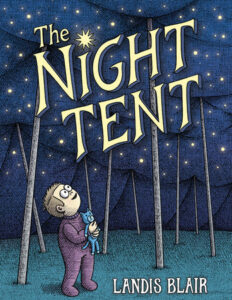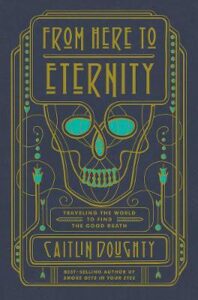 This month’s author interview with Rajani Narasimhan LaRocca. I had a blast meeting Rajani at a Highlights event a few years ago, but when I saw her present at the 2022 FL SCBWI conference, I knew I absolutely had to have her join the OPB family and share her story in an interview. To put it in a word, she was terrific.
This month’s author interview with Rajani Narasimhan LaRocca. I had a blast meeting Rajani at a Highlights event a few years ago, but when I saw her present at the 2022 FL SCBWI conference, I knew I absolutely had to have her join the OPB family and share her story in an interview. To put it in a word, she was terrific.
In addition to being a practicing physician (WOW!), she’s a talented author with a passion for creating stories that celebrate her Indian-American heritage and introduce STEM concepts to young readers. In her brief career as a writer, LaRocca has authored several acclaimed picture books as well as books for older kid readers. It’s well worth noting that her middle-grade novel in verse, Red, White, and Whole, was a Newbery Honoree.
In sum, she’s got a husband, a dog, two kiddos, two careers, and a lot of well-received kidlit books. How does she do it all? Let’s find out!
RVC: Before we start, let’s clarify something important. What’s the correct way to pronounce your name? As someone with an easily mess-up-able name, I’m especially sensitive to such things, and I KNOW some people are saying yours incorrectly.
RL: My name is pronounced RUHJ-née (rhymes with FUDGE-née) La-ROCK-ah. Here’s a helpful audio link on Teaching Books.
RVC: Thanks for that! While I’m incredibly impressed that you attended Harvard and Harvard Medical School, I’m going to only ask you one question about your doctorness. Here goes! How did your background as a physician influence your decision to become a children’s book author?
RL: There are lots of things about that a career in medicine and a career in writing have in common, including years of practice and the need to work with a team. But the most important thing they have in common is that both, at their heart, require a fascination for and a love of people. As a doctor, it’s my honor and duty to listen to my patients and understand their stories. As an author, I do the same with my characters.
RVC: What inspired you to write your first picture book (Seven Golden Rings), and how was the journey from idea to publication?
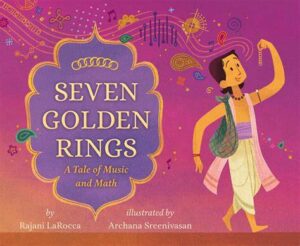 RL: Seven Golden Rings was one of the first picture books I ever wrote! It was inspired by a logic puzzle that my uncle told me and my cousins in India when I was a kid. Decades later, I remembered that puzzle and wanted to write a story in which a character had to solve that puzzle for an important reason. It took me 70 revisions before the story was finally the way I wanted it to be! But ultimately, it found the perfect editor—Cheryl Klein, who was editorial director at Lee & Low Books at the time. Archana Sreenivasan did an incredible job of making the story and math come to life with her illustrations.
RL: Seven Golden Rings was one of the first picture books I ever wrote! It was inspired by a logic puzzle that my uncle told me and my cousins in India when I was a kid. Decades later, I remembered that puzzle and wanted to write a story in which a character had to solve that puzzle for an important reason. It took me 70 revisions before the story was finally the way I wanted it to be! But ultimately, it found the perfect editor—Cheryl Klein, who was editorial director at Lee & Low Books at the time. Archana Sreenivasan did an incredible job of making the story and math come to life with her illustrations.
RVC: What was the most important lesson that book taught you?
RL: My son was particularly into math from a very young age, and he loved picture books that featured complex math. Seven Golden Rings continues to be a favorite when I do school visits, and it has taught me that stories that feel like folktales and deal with math can have a place in today’s picture book market.
RVC: Looking beyond Seven Golden Rings, I’m starting to notice a musical theme in your books—it’s in Midsummer’s Mayhem and Red, White, and Whole, for instance. How intentional is that?
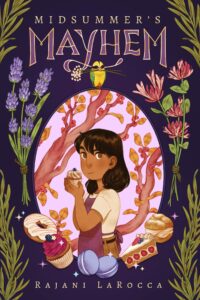 RL: Music has been important to me since I was a child. I played classical piano since age 9, and I was and am obsessed with 80s pop music, so it’s not surprising that music plays a big role in almost all my stories: Midsummer’s Mayhem, Seven Golden Rings, Red, White, and Whole, my most recent novel, Mirror to Mirror, and my forthcoming 2024 MG fantasy, Sona and the Golden Beasts. To me, music is a powerful force that can connect us to other people across distance and time.
RL: Music has been important to me since I was a child. I played classical piano since age 9, and I was and am obsessed with 80s pop music, so it’s not surprising that music plays a big role in almost all my stories: Midsummer’s Mayhem, Seven Golden Rings, Red, White, and Whole, my most recent novel, Mirror to Mirror, and my forthcoming 2024 MG fantasy, Sona and the Golden Beasts. To me, music is a powerful force that can connect us to other people across distance and time.
RVC: Even though this is a picture book blog and Red, White, and Whole is MG, I have to ask—in terms of writing craft, what’s something you’re proud about from that book?
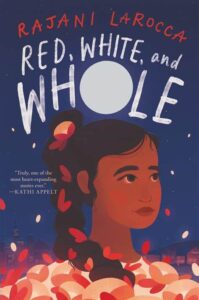 RL: When the idea for Red, White, and Whole first came to me, I felt it should be written in verse, because it was an emotional, interior-focused story. But although I’d written poetry and lyrical picture books, I’d never written a novel in verse before. I’m proud that I tried anyway.
RL: When the idea for Red, White, and Whole first came to me, I felt it should be written in verse, because it was an emotional, interior-focused story. But although I’d written poetry and lyrical picture books, I’d never written a novel in verse before. I’m proud that I tried anyway.
RVC: Inquiring minds want to know…what was the Newbery experience like?
RL: It has been an absolutely amazing experience, from the surprise phone call the evening before the announcements, to the announcements themselves, getting to know the fellow Newbery authors—at first virtually and through reading their books, and then in person at the ALA annual conference. The 100th anniversary celebration and the Newbery-Caldecott banquet are events that I will never forget.
RVC: I’ll bet!
RL: What a dream to be a part of American literary history! And the most mind-blowing aspect of it all is that thanks to this award, so many readers will be reading Red, White, and Whole for years to come. As a kid who always looked for the books with the shiny stickers, I can’t believe that my book has one now.
RVC: Congrats on all that. Now, back to picture books. What has been your most rewarding experience as a picture book author so far?
RL: Seeing what talented illustrators do with my words has been incredibly joyous and humbling.
RVC: Which of your picture books do you feel most connected to and why?
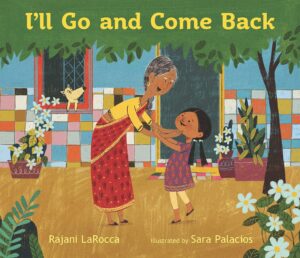 RL: Oh, it’s so hard to choose just one! But I have to say that I’ll Go and Come Back, a story about a girl and her grandmother and love that stretches across the world, is very close to my heart. It was one of the first picture books I wrote, and the first one we sold, and the story is inspired by my relationship with my own grandmother.
RL: Oh, it’s so hard to choose just one! But I have to say that I’ll Go and Come Back, a story about a girl and her grandmother and love that stretches across the world, is very close to my heart. It was one of the first picture books I wrote, and the first one we sold, and the story is inspired by my relationship with my own grandmother.
RVC: How has your writing evolved since your first published picture book? What have you learned along the way?
RL: I think I’m a little faster at writing picture books now, but there are still picture books that take me months or years to figure out. I write from a place of joy and curiosity—that continues to drive everything I write.
RVC: Let’s go with a couple of bigger-picture questions. Explain the type of research that goes into creating the diverse and culturally rich worlds in your books.
RL: I often write from my own lived experience, using details and descriptions that I am familiar with. I’ve been fortunate to work with illustrators who do their own meticulous research in bringing those worlds to life.
RVC: What role do you think picture books play in fostering empathy and understanding among young readers?
RL: Picture books, with their short texts and gorgeous illustrations, invite people to read them over and over. By seeing people who are both like and not like them in picture books, young readers develop respect for different people, are less likely to see them as “other,” and are more likely to see focus on the things all people have in common.
RVC: What advice would you give to aspiring picture book authors, especially those from underrepresented backgrounds?
RL: Write the story you want to write, the one that calls to you and won’t let you go.
RVC: Which picture book authors or illustrators have most inspired or influenced your own writing?
RL: During my childhood and even during my children’s childhoods, there was very little diversity in children’s picture books. I’m so grateful and proud to be publishing picture books now, with so many diverse authors and illustrators. It is very personally important to me that there are so many Indian American authors and illustrators that are publishing beautiful books today.
RVC: Let’s get practical. How do you negotiate the various demands on your time? What’s your secret? Did you figure out how Michael Keaton cloned himself in the movie Multiplicity? Did you borrow Hermione’s Time-Turner?
RL: Haha! Almost everyone in kidlit has other things that compete for their time. My children are adults now, so I have more time than when they were little. But in general, I’ve always tried not to be too precious about when and where I write—I have worked in my (parked) car, on trains and planes, and in every room of my house. I have worked for 15 minutes at a time because that’s all the time I can spare. I try to get rid of excuses and just do what I can when I can.
RVC: I always like to ask a question about health and wellness, and here’s yours. What do you do to de-stress?
RL: I love being outside when the weather is nice. I also find that time spent with family and friends allows me to de-stress.
RVC: Last question for this part of the interview. What’s an upcoming project or two that you’re especially excited about?
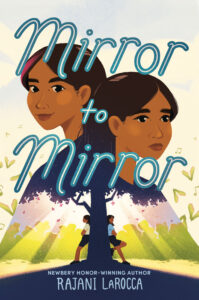 RL: Mirror to Mirror is my dual-POV novel in verse that released in March. It’s a story about identical twin sisters, Maya and Chaya, who are very close and love each other very much. But Maya hides a terrible secret—serious anxiety that causes her a lot of pain, but she doesn’t want to tell anyone about, especially her parents. Chaya tries to help her twin, but soon realizes she’s out of her depth and tries to tell their parents. Maya stops her, and then shuts her out. Then Chaya wonders whether Maya’s anxiety is because of her, so she changes the way she looks, putting in a pink streak in her hair, and trades classical piano for show tunes and modern music so Maya doesn’t feel like she’s the competition. But instead of bringing them closer together, it pushes them further apart. In the last part of the story, the twins make a bet to switch places, pretending to be each other and playing each other’s music. Whoever lasts the longest without being discovered gets to decide what they do about high school, something they’ve been arguing about. Pretending to be each other teaches each sister about her twin … and about herself.
RL: Mirror to Mirror is my dual-POV novel in verse that released in March. It’s a story about identical twin sisters, Maya and Chaya, who are very close and love each other very much. But Maya hides a terrible secret—serious anxiety that causes her a lot of pain, but she doesn’t want to tell anyone about, especially her parents. Chaya tries to help her twin, but soon realizes she’s out of her depth and tries to tell their parents. Maya stops her, and then shuts her out. Then Chaya wonders whether Maya’s anxiety is because of her, so she changes the way she looks, putting in a pink streak in her hair, and trades classical piano for show tunes and modern music so Maya doesn’t feel like she’s the competition. But instead of bringing them closer together, it pushes them further apart. In the last part of the story, the twins make a bet to switch places, pretending to be each other and playing each other’s music. Whoever lasts the longest without being discovered gets to decide what they do about high school, something they’ve been arguing about. Pretending to be each other teaches each sister about her twin … and about herself.
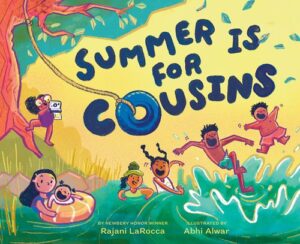 My next picture book, Summer Is for Cousins, is filled with sweet and stunning illustrations by Abhi Alwar, and releases May 16! It’s a story about a little boy named Ravi who is so excited to see his cousins during summer vacation. But his oldest cousin, Dhruv, is very different this year—much taller, with a deeper voice—and Ravi is worried Dhruv won’t remember all the things they used to share, including their favorite flavor of ice cream. This is a book about the sweetest joys of summer: sun, water, food, and family. You can see the book trailer here.
My next picture book, Summer Is for Cousins, is filled with sweet and stunning illustrations by Abhi Alwar, and releases May 16! It’s a story about a little boy named Ravi who is so excited to see his cousins during summer vacation. But his oldest cousin, Dhruv, is very different this year—much taller, with a deeper voice—and Ravi is worried Dhruv won’t remember all the things they used to share, including their favorite flavor of ice cream. This is a book about the sweetest joys of summer: sun, water, food, and family. You can see the book trailer here.
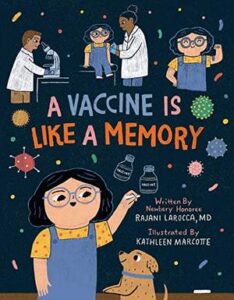 A Vaccine Is Like a Memory, beautifully illustrated by Kathleen Marcotte, releases June 20. It’s a picture book explaining the history of vaccines, how they work, and why they’re important. As a physician, I wanted to explain this important bit of science to young people.
A Vaccine Is Like a Memory, beautifully illustrated by Kathleen Marcotte, releases June 20. It’s a picture book explaining the history of vaccines, how they work, and why they’re important. As a physician, I wanted to explain this important bit of science to young people.
Your One and Only Heart, gorgeously illustrated by Lauren Paige Conrad, releases August 15. This is a nonfiction picture book explaining the biological wonders of the human heart in paired poems.
Masal Chai, Fast and Slow, with lovely illustrations from Neha Rawat, releases September 5. It’s a picture book about Aarav, a boy who loves to go fast, and his thatha, or grandfather, who likes to take things slow. But every afternoon, they meet and make masala chai together. When Thatha sprains his ankle and can’t make chai, Aarav tries to make some for him, with hilarious results.
The Secret of the Dragon Gems, cowritten with my great friend Chris Baron, releases August 29. It’s an epistolary novel about Tripti and Sam, two kids who meet at summer camp when they find two interesting-looking rocks and take them home to their homes in Massachusetts and California. Then they start corresponding via letter, email, text, and video chat, because strange things keep happening, and they start to wonder whether the rocks might be something other than rocks.
RVC: Whew, that’s a whole lot of goodness coming out, Rajani. Well done, but now it’s time for the thing you’ve been waiting for. It’s the very thing that make most people agree to be part of OPB, in fact. It’s…the end-of-interview LIGHTNING ROUND! Prepare yourself for six speedy questions that I trust will elicit six zippy answers. Are you ready?
RL: Yes!
RVC: What makes your eyes roll every time you hear it?
RL: “Irregardless.”
RVC: If someone overhears you singing in the shower, you’re probably belting out…
RL: an 80s tune!
RVC: Best 80s trend that should absolutely 100% be brought back immediately.
RL: Leggings (already back!)
RVC: What’s a STEM topic that isn’t yet covered well enough in picture books?
RL: More books about human biology! I’m trying to contribute more to this myself.
RVC: What’s a recent terrific STEM picture book that attention than it got?
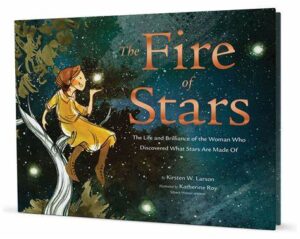 RL: The Fire of Stars by Kirsten Larson and Katherine Roy, a PB bio of astrophysicist and astronomer Cecelia Payne which is combined with the story of the formation of a star, is an absolutely brilliant book.
RL: The Fire of Stars by Kirsten Larson and Katherine Roy, a PB bio of astrophysicist and astronomer Cecelia Payne which is combined with the story of the formation of a star, is an absolutely brilliant book.
RVC: If you could choose one key takeaway for a reader of your picture books, what would it be?
RL: There are all kinds of families and all kinds of joy. My picture books try to explore both.
RVC: Thanks so much, Rajani!
RL: Thanks so much for having me, Ryan!

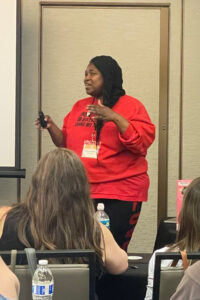 “When we think about pacing, it’s the movement of the story, and the speed at which your story moves on the page. I always tell people that, for me, as a math person, pacing is mathematical as well as musical. Because when you’re thinking about pacing, you’re doing a lot of counting, you’re counting spreads, you’re counting beats.”
“When we think about pacing, it’s the movement of the story, and the speed at which your story moves on the page. I always tell people that, for me, as a math person, pacing is mathematical as well as musical. Because when you’re thinking about pacing, you’re doing a lot of counting, you’re counting spreads, you’re counting beats.”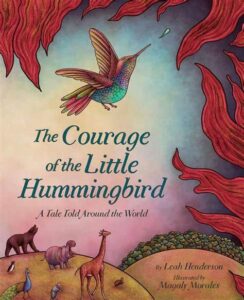 “I had to take a step back. And I had to say, first and foremost, we need to protect ourselves. We need to make sure that we are okay so that we can tell the stories that we really want to tell. So, for about a year and a half, I walked away from writing. And it was this thing where I was like, the thing that I love isn’t loving me back right now. So, I need to go find other ways to fill my well. At the beginning, it was not easy. I felt very guilty. And I did try to keep writing, but it just was not working. So, I said just take the time away. That’s what I did.”
“I had to take a step back. And I had to say, first and foremost, we need to protect ourselves. We need to make sure that we are okay so that we can tell the stories that we really want to tell. So, for about a year and a half, I walked away from writing. And it was this thing where I was like, the thing that I love isn’t loving me back right now. So, I need to go find other ways to fill my well. At the beginning, it was not easy. I felt very guilty. And I did try to keep writing, but it just was not working. So, I said just take the time away. That’s what I did.”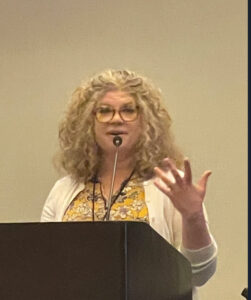 “I often say that kidlit is the one place I have found where a stranger really is a friend you haven’t met yet.”
“I often say that kidlit is the one place I have found where a stranger really is a friend you haven’t met yet.”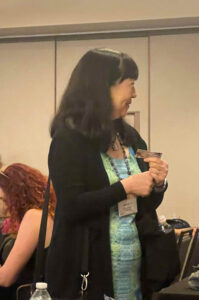 “Your mental health needs to come first. Remember that even if you feel like nothing is happening in your career, no matter what you try, do not lose hope. Be kind to yourself. And that’s so, so important because I think we were all really tough on ourselves. And we all push ourselves so much, which is good sometimes. But try not to compare your own path to that of other people who may not being going through the stresses and challenges you face. I cannot emphasize that enough. Be kind to yourself.”
“Your mental health needs to come first. Remember that even if you feel like nothing is happening in your career, no matter what you try, do not lose hope. Be kind to yourself. And that’s so, so important because I think we were all really tough on ourselves. And we all push ourselves so much, which is good sometimes. But try not to compare your own path to that of other people who may not being going through the stresses and challenges you face. I cannot emphasize that enough. Be kind to yourself.”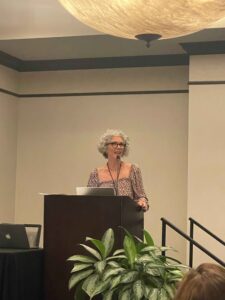 “What is important to know is that metaphors go way beyond that kind of decoration, or window dressing. They step us outside of the daily flow of prose that we use regularly and slow us down and emphasize that which they’re describing, worth pointing out. So they’re decoration, but they’re also emphasis.”
“What is important to know is that metaphors go way beyond that kind of decoration, or window dressing. They step us outside of the daily flow of prose that we use regularly and slow us down and emphasize that which they’re describing, worth pointing out. So they’re decoration, but they’re also emphasis.”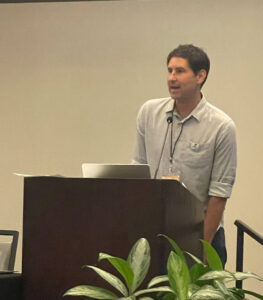 “Crowds will one day swarm to your ideas and they will look to you for guidance, eager to follow, and they will follow. You are more than a single note played again and again. You are a symphony. You are sounds plucked from all the places you’ve been and all the people you’ve met and all the feelings you felt. You are blues and pinks and loneliness and laughter, mismatched scraps accumulated over time and stitched together into a kind of patchwork. And even when your pattern loses its design, when it grows lopsided, or tangled, or is hard to follow, it will be beautiful. We, writers, are beautiful.”
“Crowds will one day swarm to your ideas and they will look to you for guidance, eager to follow, and they will follow. You are more than a single note played again and again. You are a symphony. You are sounds plucked from all the places you’ve been and all the people you’ve met and all the feelings you felt. You are blues and pinks and loneliness and laughter, mismatched scraps accumulated over time and stitched together into a kind of patchwork. And even when your pattern loses its design, when it grows lopsided, or tangled, or is hard to follow, it will be beautiful. We, writers, are beautiful.”
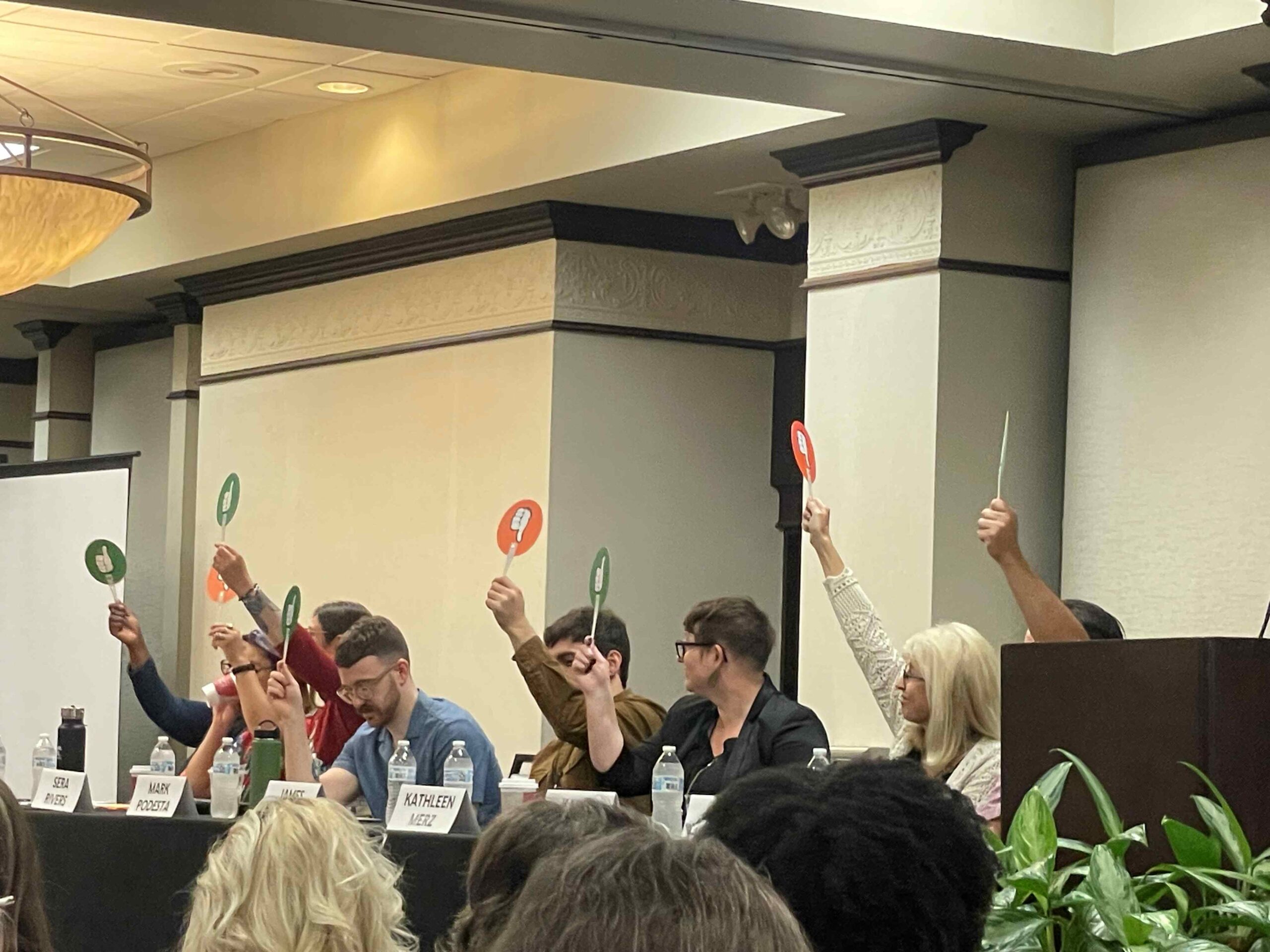


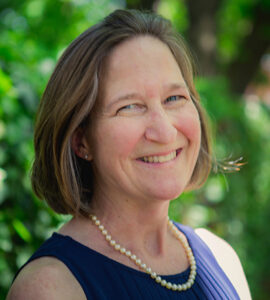 This month’s Insider Interview is with Hilary B. Van Dusen, senior executive editor at Candlewick Press. As of 2021, she’s acquiring titles for
This month’s Insider Interview is with Hilary B. Van Dusen, senior executive editor at Candlewick Press. As of 2021, she’s acquiring titles for 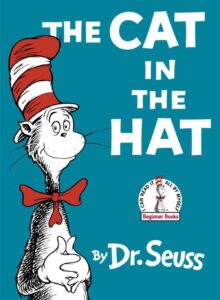
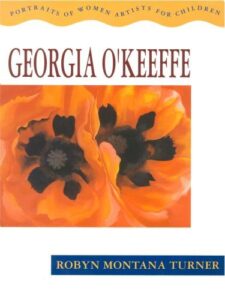
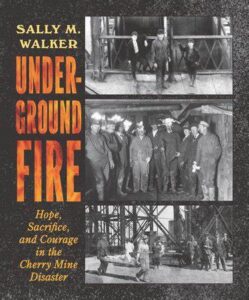
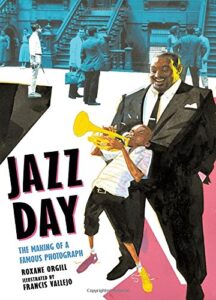
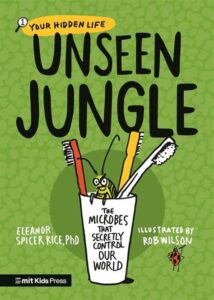
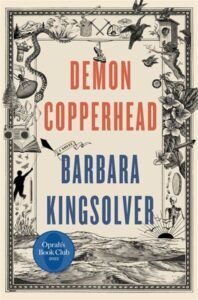
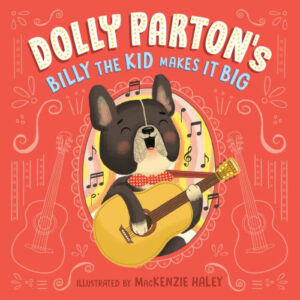
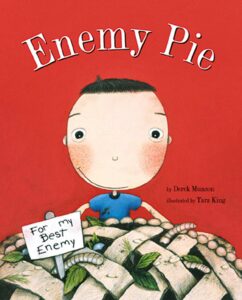
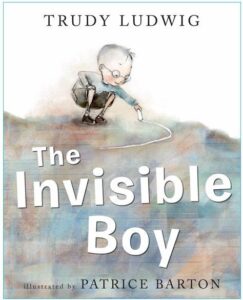
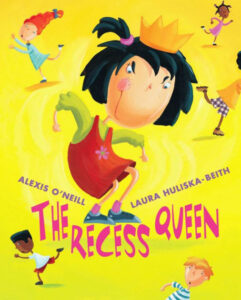
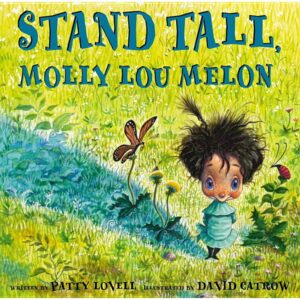
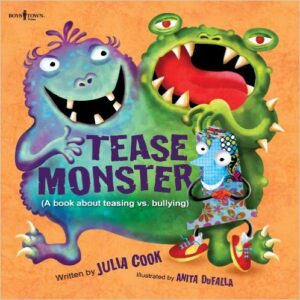
 This month’s author interview with Rajani Narasimhan LaRocca. I had a blast meeting Rajani at a Highlights event a few years ago, but when I saw her present at the 2022
This month’s author interview with Rajani Narasimhan LaRocca. I had a blast meeting Rajani at a Highlights event a few years ago, but when I saw her present at the 2022 





 A Vaccine Is Like a Memory
A Vaccine Is Like a Memory
